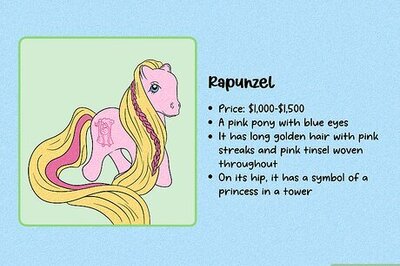
views
With natural energy resources depleting fast and the threat of global warming looming dangerously close, green buildings are growing in demand.Green buildings are a model of sustainable development.They use resources efficiently to ensure that future generations are not deprived of them.They are all the more important in view of fast depletion of natural energy resources and threat of global warming.Besides natural resources, green buildings lay a lot of stress on the health of the end user.Hence green buildings with energy saving windows are not only environment friendly, but also a healthy place to work.For any window to earn its stripes, a green building must fulfil two basic criteria – it must be built with energy efficient materials and it must make efficient use of energy.LEED (Leadership in Energy Efficiency and Design) is the leading rating system adopted in India and the world to certify green buildings.The rating has a total of 69 credits that can be availed on six different parameters.These include sustainable sites, water efficiency, energy and atmosphere, materials and resources, indoor environment quality and innovation and accreditation professional inputs.If you follow LEED rating system, the use of energy saving windows can contribute to valuable credit points under the following parameters: Energy and atmosphere: Superior sealing, saves energy.Material and resources: They are recyclable and require lesser energy in production.Indoor environment quality: Do not require any painting.Windows conserve energy through two different ways.Firstly the window material should not consume high energy to produce or it should not put much strain on our energy reserves and natural resources.Secondly the window, once installed should prevent any energy losses through it.PVC has the lowest U value which implies it is the preferred material for energy efficient windows.Insulation in 'green' windows is further improved by the use of sealants between the wall and frame, double or even triple glazing and fusion welded joints that leave no gaps 'Green' windows are made of UPVC also known as green material which is tropicalised for India.The framing material has replaced wood the world over.The use of UPVC eliminates dependence on wood which, in turn, leads to forest conservation.While the insulation of UPVC is equal to wood, it scores over wood in three key areas: fire-resistance, durability and (absence of) annual maintenance.Apart from being energy efficient, UPVC is also an environment friendly material.■ Resource Reuse: UPVC is 100 per cent recyclable.A report by British Plastics Federation, states that PVC can be recycled relatively straightforwardly.It is now common practice to recover and recycle factory wastes and/or off-cuts after the window has been fabricated.■ Regional Materials: UPVC window is locally available across India.■ Indoor environment quality: Today UPVC windows are designed to perfection and fabricated in modern state of the art factories – provide windows with excellent sealing to keep environmental pollutants like sound, dust and even tobacco smoke isolated.With these windows a sound insulation of more 30 per cent is always possible.■ Life expectancy: As per British Plastics Federation the life expectancy of a PVC window is over 40 years.■ Low emitting materials (adhesives and sealants): The silicone sealants used for sealing window around the periphery have nil VOC content and are safe to use.■ Low emitting materials (paints and coating): The PVC window is extruded pristine white and does not require any maintenance.It can be easily cleaned with soap and water and does not require any painting.Heat loss/gain through a window can happen through any of the following four ways ■ Heat flow through a window: This is measured by U value ■ Amount of heat gained from direct solar heat as a factor of total heat falling on the window: Affected by the glass used in the window and less affected by the framing material ■ Amount of visible light allowed through a window as a factor of total visible light falling on the window: Affected by the glass used in the window and less affected by the framing material ■ Amount of air that passes through a window: This is affected by how the window is made and installed, and depends on the design, type of material used and technology used to fabricate the window




















Comments
0 comment